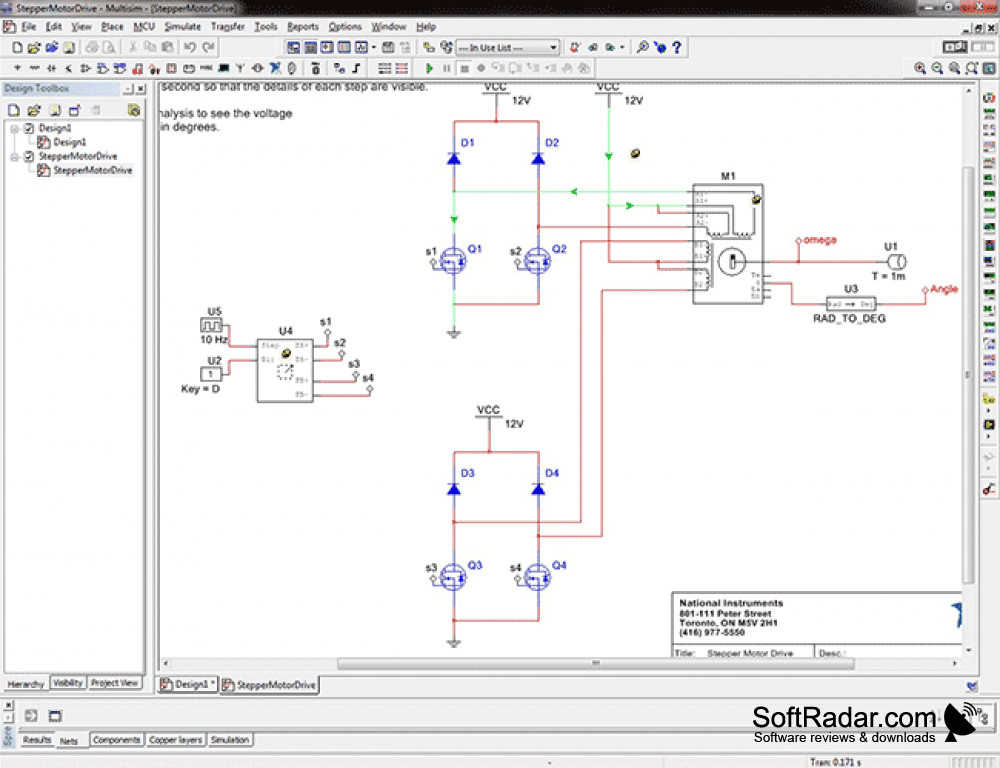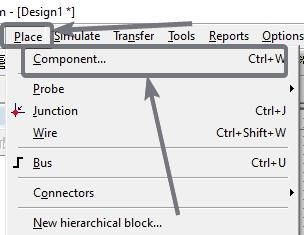

Programa Ni Multisim 10 Free Download For
LabVIEW, written by National Instruments, provides emulation of both digital and analog systems, although in this lab just digital emulation is used. This is a free download for the PC but not the MAC. Breakpoints can be added and removed, and single stepping is allowed. It allows simulation of all the full 68000 instruction set and all addressing modes. EASY68K, an open source project distributed under the GNU general public use license, provides an easy-to-use simulation of the 68000 microprocessor. Computers have programming facilities specific to courses taught in this lab:

There are 8 switches, 8 LEDs, and two debounced pushbuttons.Traffic Light: This full-size traffic light can be driven by the DE10 Development Board through an interface that was designed and built by Villanova Computer Systems Engineer Clayton Bannon. There are plug boards so the students can create logic circuits by inserting wires. It is a free download, but runs only on the PC.30 Digital logic trainers: Contain a set of integrated circuit chips including NAND gates, NOR gates, inverters, and flip flops. It is used to create an assortment of digital circuits, including a multiplexer, state machines, and a traffic light controller. Quartus, written by Altera, is designed to program the MAX 10 FPGA in VHDL. This program is a free download and has versions for both the PC and Mac.
Using LabVIEW, they then design counters and state machines.The second three labs require the students to program a series of increasingly difficult situations on the 68000 using the Easy 68K program. They begin by testing individual gates, then more complicated combinatorial logic circuits, and eventually flip flops. The first three labs use the digital trainers and require the students to design, build and demonstrate digital circuits of increasing difficulty. Nevertheless, it is primarily used for the following courses:ECE 2043 Fundamentals of Computer Engineering Lab IConsists of six labs, each requiring 2–3 weeks to complete.
Students perform lab experiments using general purpose operational amplifiers, p-n junction diodes, zener diodes, and bipolar junction transistors to design, simulate, and build multi-stage electronic circuits and discrete amplifiers. The circuits increase in difficulty, and their final chore is to design a traffic light controller at an intersection of two roads with a treadle under one of the roads.ECE 2550 Introduction to Electronics & ApplicationsThis two credit hour course serve as an introduction to various electronic devices and their applications. They first create simple combinational circuits, such as a multiplexer. They use the pushbuttons to cause the program to run in different modes.The second three labs use VHDL and the DE10 Development Board to create various types of logic circuits. They learn how to use the PIC timer to control the rate of flashing the LEDs. The first three labs use MPLAB and the Kanda PIC Board.
For the final project they build and test a two-stage CMOS op-amp using quad n-channel and p-channel MOSFET arrays and then construct a non-inverting/inverting amplifier to obtain a finite gain. Students use NI myDAQ and NI Multisim to design, simulate, build, and test various MOSFET circuits, discrete amplifiers, and IC amplifiers.


 0 kommentar(er)
0 kommentar(er)
